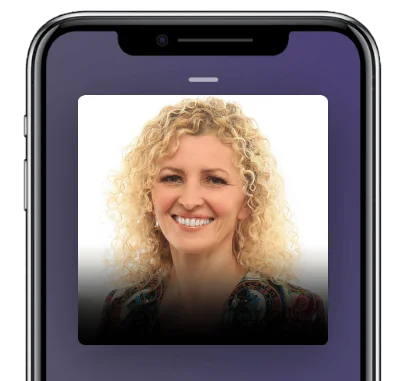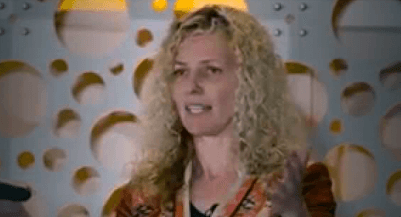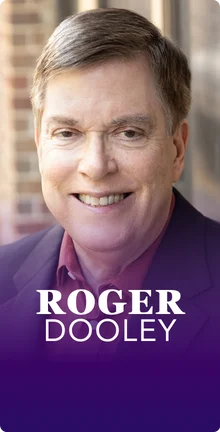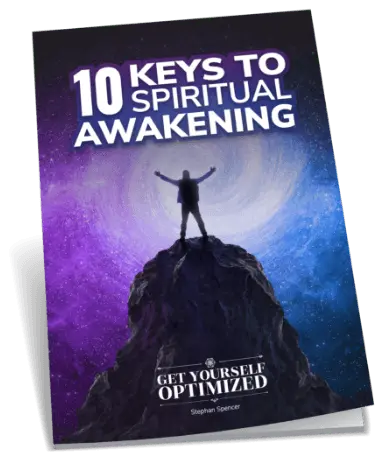Carmen, it’s great to have you on. Thank you for coming!
Thank you for inviting me.
Let’s start with, what does it mean for you to be memorable? What all is encapsulated into that phrase being memorable?
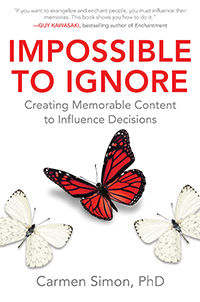
I’m enjoying such as a deep question because asking what does it take to be memorable is like asking what does it take to be happy. There are lots and lots of variables involved. In fact, in the book that you just mentioned, the Impossible to Ignore book, that came as a result of some research that I had done asking exactly that question. I asked, “What does it take to be memorable?” and I identified 15 variables that we can use to control what other people remember. This is a deep phrase to control-“what others remember”-because so often we are so consumed by improving our own memory when what we should be consumed about instead is improving other people’s memory. This is because businesses that are viable and people who are viable in business regardless of your role, whether you’re an I.T or marketing or sales or training-it doesn’t matter-you will stay in business and you’ll be successful if you can improve other people’s memory in a sense of staying on other people’s minds. Throughout the show, I’m sure that we’ll allude to quite a few of those variables, but I want to point out that, our memory is impacted by variables that other people can’t control in us, for instance-how many hours of sleep did you get last night?
I think I got eight or maybe, seven and a half.
Ooh! That’s good! You’re one of the lucky ones and one of the exceptions. As we look at various studies, we realized that, especially for North America, people get six hours or less of sleep per night and that’s unfortunate because memories are not formed instantly-memories need some consolidation time and sleep is conducive to that consolidation period. You can be the most outstanding presenter and have the best content but if you speak to an audience who is sleep-deprived, you’re not going to have as much luxury in staying on people’s minds. It’s the same with other people’s emotional state or the extent to which they’re stressed, or experience some anxiety, or the amount of hormones circulating through their bodies. Those are things we cannot control in others but that’s fine because we have so many other variables we can control and that there is a large inventory to pull from.
Yup, and listeners, I just want you, guys, to know that sleep is one of the most critical things you need to guard and really take care of because as Carmen says, it’s really important to your memory and the important part of your sleep is, essentially, garbage collection where there’s a lot of stuff that you collect during the course of the day that needs to get purged, wiped out, and cleaned up as well as there’s like, not just memories and things that you don’t need, but also from a physical standpoint, you need that garbage collection and rejuvenation process to fully cook while you’re sleeping so robbing yourself of sleep is really bad for you.
Oh, for sure! It definitely impacts your memory and the ways that memories are formed or not formed. Coming back to your original question, in terms of what are some things that we can indeed influence in other people since we just mentioned one of the biggest ones, which is emotion. We’re talking about not necessarily impacting the emotional state that an audience already comes with as they attend to your content, but you are able to impact the emotional content that you are delivering. There are two types of emotion any time at stake-you’re speaking to an audience, or you’re writing a blog, or you’re writing an email, it doesn’t matter what the communication form is, and as people are receiving it, there are two emotions at play: One is, their emotional state as they’re viewing your content or interacting with it, and the other is, the emotional nature of the content that you’re producing. I’m reminded of a commercial that was created by Pedigree, the company.
It was a print-ad and it showed this two contrast in pictures-one would display, for instance, a man on some rocks in front of the ocean contemplating but he looked so lonely, and the picture next to it was exactly the same snapshot, except this time, right next to the lonely man, is a dog. You would see the same campaign replicated where they would show a man walking by the beach, also in a very beautiful environment, but kind of lonesome, and the picture next to it showed exactly the same person but with the dog next to him. The conclusion for the campaign was to adopt the dog because the dogs make us happy. The content has such emotional nature that it’s impossible not to appeal to you and not to remember it later because as I’m sure you know from your training, emotions have a stronger chemical signal and that’s why they lead to stronger memories.

Right. So, if you were to involve your audience in some sort of activity that would get them into a peak emotional state then their retention rates would be a lot higher?
Absolutely! Now, you are involving even more variables because in addition to offering content that’s emotional in nature, you are engaging people versus providing content that is passive. Now, you’re activating more parts of someone’s brain. That’s why you often hear this principle of, “Offer more engagement! Offer more engagement!” and if we were to look at brain science and explain why is it that those moments are memorable-the reason why is because when we are participating, we have more brain parts that become active.
Mm-hmm. Right. Tony Robbins is an incredible speaker and one of things that allows his audiences to retain so much of the information is, he engages them in such a way that they are-at least every, maybe, 15 minute-doing something that’s engaging like a physical activity such as, turning to your neighbor and telling them something, or he’ll have people massage their neighbor. He’ll say, “Everybody turn to the right and massage your neighbor’s shoulders!” and for somebody who’s not used to that kind of environment, they go to a presentation and it’s just sitting in your seat and get lectured at, it can be the kind to get you outside of your comfort zone like, “Okay, now I have to touch somebody, some stranger, next to me and give him a massage!” but he has an incredible result that he provides for his audiences, getting them to retain this information, and then apply it in their lives. Providing a lot of emotion and engaging them in emotional activities really, really works well. I’m a huge fan of Tony’s. I don’t know if you go to any of his events.
I have and I know what you mean because from the discomfort of massaging a stranger’s shoulders to walking on coals…
Yes!
Those are memories that you’ll find very hard to erase later on. One of the reasons is because the chemical signal that is being produced in our brains at the time is much stronger compared to something where you’re just sitting passively and listening. Some people may be listening to this thinking, “Well, we don’t have the ability to put on a show like Tony Robbins, what would be a principal that we can use?” The principle stays the same regardless if you are putting on a multi-million dollar show or you’re just simply writing an email or creating a PowerPoint deck. Constantly step back and think, “How is it that I can move away from passive communication?” and sometimes, the answer can be fairly simple. For instance, I remember a Volkswagen commercial-this, too, was also a printed-ad-and they wanted to advertise the fact that their cars had this parking assist. These days, you don’t have to suck so much at parallel parking, the car does it for us. The picture simply showed three bags that had, in them, a golden fish each, and you know how, when you buy one of those little fish, it comes in a plastic bag and it’s a tied up at the top but the fish is still in the water?
Right.
Memories are formed because something is encoded in our brains to begin with.
Those bags are fairly fragile-you don’t want to destroy them in any way because you might kill the fish. Imagine that these two bags are set up in a in a row, there’s a space, and then the third bag is placed so now, this little porcupine is trying to park itself in between these bags with the fish. Obviously, the porcupine has to be very careful because you cannot destroy the livelihood of the fish in the bag so the porcupine is very nicely and precisely placed in between these bags. The tagline for the ad is “precision parking” and the reason I’m enjoying this and I’m still remembering it weeks and weeks later is because it wasn’t passive communication. The ad could have very simply shown a car that is precisely parked amongst other cars that are not of the same brand, but instead, they went for a metaphor, and that metaphor invites you to think just that little bit of extra. If we talk about what makes something memorable-how do memories even get formed? They are formed because something is encoded in our brains to begin with, and if we make that encoding just a little bit harder initially, that means, we benefit from the extra attention, which then paves the way to memory.
Right. So, let’s talk about memories because you get different kinds of memories stored in different parts of the brain so the way that your memories are encoded and the way that the actual part of your brain where the memories are stored is different depending on the kind of memory. I believe the terminology is called Memory Gadgets where, let’s say, you want to remember a phone number, you would remember in a different part of your brain than the picture of somebody’s face. One thing that was a big “aha” moment for me in terms of my memory personally, I was under this mistaken idea that my memory was getting worse as I was getting older. I’m not that old but I’m in my 40’s. I was starting to notice that my memory was not as good as it was ten years ago. I had this idea that, maybe, my memory’s getting worse and worse so once you incorporate that into your identity, then, of course, you’ve kind of subconsciously make that part of your identity real in all sorts of different ways so I was finding my memory was getting worse. I realized what I was doing and I changed my thinking about this so that, all right, the reality and the truth is, my memory is fantastic in terms of numbers. I can remember numbers from decades ago like phone numbers, addresses, and so forth. I can remember lots of different numbers. So, that’s true and I took that on board and I was able to resonate with that.
Then, I had this idea that remembering people’s names was hard for me and I wasn’t doing that very well, but then, I realized that it’s important to the other person that you know their name because it’s a sign of respect that they are valuable- a valuable enough person for you to take that time and effort to memorize their name. I want to be respectful and thoughtful so I wanted to remember people’s names. I had that identity shift that I’m a person who actually does have a good memory, I have a desire to show respect by remembering people’s names, and wow, my memory has improved incredibly. I think that’s a couple of important distinctions there for our listeners-that different kinds of memories are stored in different parts of the brain. We might want to go into some detail about how to use our visual cortex to store memories if you want to remember faces, names, and so forth as there are tricks to doing that. Also, the fact that you need to give yourself empowering self-talk, instead of disempowering, so that you set yourself up to succeed.
Yes, self-empowering talk is definitely a good technique. I’m impressed by your efforts because you are actually putting some work in improving your own memory and realizing some of your thought patterns and that’s admirable. I wonder if many other people are willing to put the same amount of effort into improving their own memory. Usually, we’re fairly lazy when it comes to working extra hard in order to improve something about the way that we remember. The reason I’m excited about influencing other people’s memory is because we’re naturally and intuitively more willing to put work into that than into improving our own memory and this is what I mean by this. There are very few of us who go to work in the morning thinking, “Today, I’m going to set aside 15 minutes to work on my memory,” and just like you said, “I’m going to work a little bit harder to remember names and faces and I’m going to work a little bit harder to remember some numbers.”
The minute that you get people to pay attention to whatever it is that you’re developing, there’s undeniably a question of trying to influence the way that they remember you to make decisions in your favor.
Not that many people are willing to change their routines in order to relieve some room for this, which would be very helpful. However, a lot of people go to work in the morning and thinking, “I’m going to set aside 15 extra minutes to make sure that I earn this customer’s attention. I want to set aside a few extra minutes to make sure that my boss is looking at my e-mail. I’m going to set aside those fifteen minutes to make sure that somebody reads the project that I just developed.” Intuitively and naturally, if you put more effort into that, all of those are efforts into the sake of influencing other people’s memory because the minute that you get people to pay attention to your project, presentations, content, or whatever it is that you’re developing, that’s undeniably a question of trying to influence the way that they remember you so that they can make decisions in your favor.
Right, so essentially, you’re teaching people persuasion techniques that is more interesting for people to want to learn than-or motivating, I should say-more motivating for people to learn that than how to do self-empowerment stuff. Let’s learn how to retain information better and utilize it better.
Exactly! I’m advocating that memory rests at the decision at the root level of all decision-making. The fact that, as you try to move through the world and improve your business or improve the position within an existing business and get people to like you, hire you, and promote you, all of that is a function of how much people remember you. This is because people will make decisions in your favor based on what they remember, not on what they forget, so it’s very satisfying to realize, “How can I apply some techniques so that I can stay on people’s minds a little bit longer?” We can connect this to what you’re saying earlier in terms of realizing that there are multiple memory repositories in our brains. All of the listeners will enjoy knowing this because you will know where you have to work extra hard and where you don’t. How is it that we form our memories? We form them through our senses, at first, so as you go to work and as you’re exposed to the world, you take it in through your senses and most of that information is gone within a fraction of a second.
There is an exercise that I enjoy from the military where they will get some potential soldiers in the room and one of the immediate questions is, “How many windows are in the room?” and they’re not allowed to look. This is because the instructors want to see how much of the world have they taken in without even being prompted and how much of their senses have been put to use. Quite often, people don’t know and of course, in training, we can learn how to get better. This is why meditation is so powerful for some because it teaches you to be “right here, right now” versus allowing your brain to go to the past or to the future where it has to be truly wants to go. We encode through our senses and then we store that information briefly into a short-term repository or a working memory repository-that’s where the phone number stays that you were just mentioning.
If somebody tells you a phone number and you don’t have a pen to write it down, just kind of rehearse it in your mind until you dial it or you write it down, and even there, information doesn’t stay for more than 40 seconds but for the intelligent people like you probably, two minutes tops until it’s gone forever, unless you keep on at it and you rehearse it in some way. For that repeated information, it has the luxury of long-term storage, which doesn’t have any capacity imitations, and even that is further subdivided into memories they can put into words such as factual things like-give me a statistic that is fresh in your mind or something that just surprised you lately when you heard it.
87% of people surveyed do not sneak their geek-meaning, they’re not hiding potentially embarrassing passions or interests.
I like that!
We form our memories through our senses.
I used that on a TV segment recently.
That’s beautiful! So, see, what you have just said-how long ago did you learn it?
About two months ago.
Oh, there you go! It’s been quite a while yet it’s still on your mind and that is stored in your semantic memory-that means your factual knowledge about the world. So, the fact that we know that Paris is the capital of France-that also goes into that repository, and contrast that against another repository that’s still part of your explicit memory or memories you put into words, which is your episodic memory, meaning, all sorts of events that took place and you can relate to other people, such as something that happened in Paris when you were there on vacation. The difference, for all of our listeners, as you try to influence other people’s memory between semantic and episodic memory is that sometimes, when you tell a story well to an audience in one episode in which you engage more of their senses and you activate more brain parts, that takes just one exposure and that story can have the luxury of long-term storage whereas, factual information and that’s semantic memory, takes a lot of repetition to stay there long-term and not decay.
Mm-hmm, yes.
There is yet another repository that’s called the non-explicit or the non-declarative repository. It’s an implicit one. Those are things that you do or say automatically such as, skills like riding a bicycle-you don’t say that into words, you don’t put it into words to someone, you just simply do it-or the priming, or habituation, or becoming sensitized to things. Some things that your muscles automatically do such as, when a pen falls on the pavement, you know exactly what motor skills do we engage in order to pick it up and put it back in your pocket. Those kinds of things are implicit and they’re almost a given, so to speak.
Mm-hmm, right. I remember this one exercise when I was at an intensive-I’m part of a secret society run by Neil Strauss.
Is that the pickup artist?
Well, he was a pickup artist. He’s happily married now. It’s really all about being your best self, not about picking up women.
I love it!
So, this particular intensive was all about N.L.P. or neuro-linguistic programming. Maybe I’m confusing the topics that were covered, but I just remember the exercise because it was really memorable in my episodic memory, right? We closed our eyes and we had to try and remember not how many windows, because it was a windowless room, but how many doors are there, what color the exit sign was above the doors, what types of doors-was it a double-door, single, three-door, or whatever-and what pattern was the carpet. I got all of it wrong. He had us raise our hands for “it’s this kind of pattern.” I don’t remember how many people got it wrong, but I just remember that I got it all wrong. I thought the exit sign was green, but it was red or vice versa. I just remember that everything was wrong and I was thinking, “Wow, I’m clearly not paying attention!”
I love your authentic story because we can all learn from that. Here’s what’s happening in our business life, we show up to work, and we start creating all sorts of communication materials like blogs, presentations, excel spreadsheets, and all sorts of forms of communication. We think that if we click “send” and simply show it to somebody, they’re going to see it. That just couldn’t be further from the truth. Memories are often rooted in attention. Could you implant memories in somebody else’s mind if they didn’t pay conscious attention to it? Yes, it’s possible, but that’s not really something that we do in business every day so we’re concerned with how much people pay attention because attention paves the way to memory. I love your example. Do you remember an incident that took place in 2007, I think it was, where that submarine was doing an exercise in the water, it surfaced into a Japanese vessel, and it killed seven people on board?
No, I don’t remember at all.
It was a tragic incident and it was tragic because the captain who was on that submarine was an experienced one, and you have to wonder how is it that, in the age where we have state-of-the-art sonar, an experienced captain would a miss, totally miss, a 200-foot vessel? The captain was interviewed afterwards admitted that he looked through that periscope, he looked, he said, but he did not see. That is very humbling to all of us because just because we create information and communication for people does not grant us the fact that everybody will have seen what we have to share.
Yup. Well, it also reminds me of a story where, I think, Tony Robbins was the one who said this, that if you are feeling uncooperative or you’re at odds with somebody-let’s say, it’s your significant other-and they want you to go get the salt from the kitchen so you go to the kitchen but you can’t find it anywhere-well, your brain has basically blinded you from seeing it so then, your significant other goes and is like, “Look, see it was right there! Right in front of your eyes,” It was literally right in front of your eyes and you didn’t see it. Your story about the guy looking into the periscope not seeing what was clearly there but his brain wasn’t picking up just reminded me of that, “Where’s the salt?”
Whatever you bring into your attention expand.
For sure! Another Tony Robbins’ favorite example is one of the reasons why people get into a car accident and they happen to hit the only pole that is on the road at that time-you have to wonder, how in the world did they hit the only thing that was there? It’s because what is it that you’re doing at the time of the accident? You’re thinking, “Don’t hit the pole! Don’t hit the pole!” and that’s what you’re magnify in your attention so therefore, that’s what you hit.
Yup!
So, literally, whatever you bring into your attention expand and that is a profound lesson for all of us creating communication and attempting to be memorable because it’s hardly ever the case that people will remember unless we force them to pay attention what to begin with. Then, we have to ask the questions of how do we make people pay attention and what is it then that we can use. One of the elements that you will see discussed in the book is this concept of distinctiveness. Whenever you create something that deviates from a pattern then that attract attention a lot more so, whether you are using color, whether using shape, or size, or animation, something in that is clearly deviating from what the brain expects so then, you can enjoy the extra attention.
Mm-hmm. What will be an example of that applied into, let’s say, a PowerPoint deck?
In a PowerPoint deck, you can apply distinctiveness at different levels. For instance, I know that a lot of people don’t enjoy their corporate templates. Most corporations out there would have a template of sorts and there’s a clear advantage to a template, which is, it gives us the ability to create sameness first. You can’t have distinctiveness unless you have some sense of similarity first because the mistake that a lot of people make is that, they vary so much in their presentations or communication thinking, “Oh, I’m going to impress an audience with something new every single minute,” that nothing stands out. So, using a template enables you to keep what’s stimulus “similar, similar, similar, similar” for a while and then, it puts you in the position of distinctiveness. Anybody out there who is using a template, the only change that you may have to request of your corporate guidelines police, because usually, there are those departments that watch for the implementation of guidelines, is to make sure that a template that gives you an opposite state and what do I mean by this? If your typical template has a light background, for instance, ask for a designer to create a darker background so this way, actually, you’ll allow the brain to have that specific style and then you can change to the opposite. The brain needs the opposite state in order to appreciate and to even detect the difference.
Yes, that’s great! I think you went through some examples in the presentation of different types of tips and tricks for PowerPoint presentations. Any others that you want to share at this moment since we’re talking about PowerPoint?
It’s the rhythm and the balance between simplicity and complexity that leads to better memories.
Yeah, for sure! So, if we continue on this concept of distinctiveness, what else can you provide opposites of because color is just one type of stimulus? You can play with the rhythm between simplicity and complexity, for instance. I quite often hear people say, “Oh, we have to simplify our complexity,” and that’s a myth where memorable content is concerned because the brain can’t really appreciate simplicity unless it knows the complexity from which it has come. So, the good news for everybody out there, especially people who enjoy a lot of complexity, a lot of data, a lot of abundance, and we have no shortage of any of those, the good news is that, we don’t have to simplify it all the time. All we have to do is be cautious and manage it well in terms of provide the brain with something that is “complex-complex” and then, simplify. You can then switch it back to the complexity that you enjoy, and then you simplify. If everything was complex all the time then the brain and give up because it has to think too much and given the choice to think or not to think, we prefer not to think. However, if everything was simple, the brain will appreciate in the moment because it doesn’t have to think but it wouldn’t form enough memory traces to remember it later. It’s the rhythm and the balance between simplicity and complexity that leads to better memories.
Right, so how would that show up in terms of, besides colors, illustrations that you use? I know one style of PowerPoint presentation is to have one metaphoric-type, big, bold image to a slide, and then just a few words, and that is kind of your talking point for the next minute or so, and then on to the next. Taking this model of old-school PowerPoint of five bullets and, maybe, 30 words on the slide, and just kind of throwing that out the window because it’s just too boring these days.
Well, here’s a way to what you think of it. Imagine your communication as a sequence of segments, whether those segments could be slides or paragraphs in a blog, whatever the communication type you’re developing, let’s consider PowerPoint for a while-in that sequence, you could have some complex charts, complex diagrams, complex bullet points, complex anything, and then, suddenly, you’re simplifying and you’re forcing the eyes to focus on only one idea and that’s indeed what you’re describing, perhaps one giant image with a few keywords, and then you can switch back to the complex diagrams and charts. That sequence is good for the brain because it gives it that opposite contrast. The same with words versus images. There is a myth that pictures are more popular and more memorable than text, but that’s not true because, for instance, if I said to you, “Imagine what you look like if you had a third eye in the middle of your forehead,” notice that I’m not showing you a PowerPoint slide right now, but I’m using words that build mental pictures in your brain so therefore, I’m activating that visual cortex that you’re talking about earlier. Words have just as much potential of being remembered if, indeed, they are the kinds that are specific and concrete enough to build the mental pictures in an audience’s minds. The good news for everyone listening is that, you don’t have to have a slide for everything as long as the words that you choose in order to express an idea are vivid enough to build the mental pictures.
Got it! So, one of the key points here is, add variety into the presentation under a backdrop of similarity so that you aren’t making the brains work too hard.
Mm-hmm.
And that’s going to create memorability or content that’s memorable.
Exactly! One important point to make is that, as you keep some things similar and as you vary some things, make sure that there is one main idea that ties all of this together and that does not change because the mistake that I’m noticing quite often in the industry is that, we love to impress audiences with novelty every single time and something changes every other second, which is great because the brain has been designed not to miss anything so you are sustaining attention, but at the end of it all, there should be one clear message that emerges throughout the entire conversation. For instance, let’s just say that through the conversation that we have, one main idea that I’d love for us to tie through all of the other ideas is that, memory is at the root of all decision-making. The reason why we’re even having this conversation is because when you stay on people’s minds, you’re more likely to influence their decisions.
When you stay on people’s minds, you’re more likely to influence their decisions. Share on XMm-hmm, yup! That’s a really good key point. What would be some other variables-there are 15 of them-and so far, we’ve talked about emotion, engagement, and distinctiveness, what else?
Ooh, let’s not forget about the mother of memory, which is repetition. That flows in nicely from what we were just talking about in terms of making sure you have one main message or one idea that ties all of the other ideas together-that gets repeated then reactivated often throughout your communication sequence. I’m surprised when I analyze thousands of presentations and different communication types that even though, we intuitively know that repetition leads to memory, either we don’t engage in it, or we don’t know how to do it well. Have you noticed that? Have you haven’t noticed that people shy away from repeating their own messages?
Yup. I have noticed that, particularly in presentations. You don’t get one core theme. I’ve heard this thing before where you tell them what you’re going to tell them and then you tell them what you told them. In fact, my adviser in graduate school told me that’s how you give presentations, but that misses the whole point that you are reinforcing throughout the entire presentation your key point.
I’m so glad you mentioned that. That’s called the T3 Principle. Tell them what you’re going to tell them, tell them, then tell them what you told them. That is in major need of an upgrade because from good old military times when that T3 Principle was born, we have seen since it evolved, and the brain is exposed to so much information that we can’t possibly afford to simply mention an overview at the beginning and the summary at the end and expect the brain to remember, which is why we have to reactivate. If you remember earlier, we’re talking about the brain building memories based on the senses at first and then storing those briefly into a short-term repository. Well, that short-term repository last for only 40 seconds to two minutes max and it only has capacity limitations of about four perceptible units and by that, I mean four units of swords-whether it’s four graphics, four pieces of text, or four chunks, which is why phone numbers are created the way they’ve created so that we can remember them in chunks.
Mm-hmm.
Then after the two minutes have elapsed, unless we refreshed that information, it is gone. We can’t hope for it to have been stored in long-term memory unless it had such a strong, emotional, and chemical signal that it will make its way through. Imagine that you’re presenting for thirty minutes or even an email that may be more aggressive with text and takes two minutes to review, anything beyond the two-minute mark has to have some reactivation if you’re hoping to leave a consistent message in an audience’s mind.
Right, so, let’s say, that in a podcast interview, you want to do that, right? How would you, besides kind of repeating yourself, you’re not in control if you’re the guest, it’s the interviewer who is steering the conversation, how would you, as a podcast guest, make sure that you are reinforcing that same key point throughout the interview so that one key concept is most effectively conveyed?
One of the reasons why we shy away from repeating our own messages is because our own chemistry with what we’re saying is not strong enough.
I really love what you’re saying in terms of putting it into the hands of the guest because it is our responsibility. For instance, if right now, I really want an audience to remember that memory is at the root of all decision-making-notice how I have said this phrase at least three or four times up until now because it’s a concept that important for me to leave on their minds. If I had enough chemistry with it, I would feel a lot more at ease repeating it. One of the reasons why we shy away from repeating our own messages is because our own chemistry with what we’re saying is not strong enough. Have you noticed it? Sometimes in business, we are given messages to say to others and, maybe, sometimes we don’t believe in them strongly enough, but when you simply love with a message and you just cannot wait-it’s almost like, think about that message of somebody that you would want to take on a date-would you date your main message? Would you date your main idea?
If the answer is yes, that means you have enough chemistry with it and you will be willing to repeat it no matter how many times it takes. Sometimes, we’re so afraid that we’ll sound remedial and maybe people will think, “Well, she’s repeating herself!” That couldn’t be further from the truth because by the time that you repeat a message, your audience’s brain will have already forgotten what you said minutes ago anyway so there isn’t the danger of being remedial, what you’re gaining with repetition is taking control over a pattern that you’re building in your audience’s brains. Your audience’s brains are constantly looking for patterns and this is because whenever we detect the pattern in our surroundings, we don’t have to think as much so we rejoice in patterns and by repeating, that means, you’re taking control over what it is that they take away.
Yeah, it’s a relief…
Yes!
When the listener or the viewer is led back on the path because they’ll get lost and they’re like, “No, actually, we remember!” This is all about memory being at the root of all decision-making and we are going to influence the prospects, the customer, or whatever because we have these amazing memory tools and influence tools that we are going to incorporate into our PowerPoint, into our presentations on stage, into our interviews where we are a guest on somebody’s show. This is real-world applicable, memory is at the root of all decision-making, and it’s like, “Okay, got it!” but then they get lost again and you got to bring them back.
You know, what’s a good inspiration is I’m always mesmerized, I don’t necessarily have any particular religious affiliation, but you watch, next time, one of those religious shows on Sunday morning-Holy moley! Can I learn a lot from those presenters! It’s because they have one message and start counting how often do they repeat one idea that they strongly believe in-that is memory at is best because after that one hour, however long you decide to spend with them to learn, they will have implanted a very strong message in our minds. They’re in charge of that message and they don’t leave it to chance.
Yup, well, where does impressing and influencing end and brainwashing begin? I don’t know.
Yeah. That’s a good point too because there’s a very fine line between what we call persuasion or influencing other people’s memory and manipulating them. The distinction that we make is this, you have some powerful tools that you can use to put the pet memories in people’s minds-that’s a given. How you use those tools can be ethical or not, and the way to determine that and to distinguish between ethical and unethical is to step back and ask, “Does this memory, if I manage to put it in somebody else’s mind, serve them well?”
There’s a very fine line between what we call persuasion or influencing other people’s memory and manipulating them.
Mm-hmm.
And if it’s put to good use and it serves not only that person well but serves us all well as a humanity, then that is a strong memory that is worthwhile having.
Right, so I guess the kind of the main point of this is, if you’re adding value into the world and into the lives of people you’re communicating with, into your community, and the world in general, you are on the right path and these tools and techniques could be used for good or for evil and it’s really what your intention is. When you show up with a powerful intention to make the world a better place and to add value in the lives and in the businesses of the people or your constituents, you’ll be well on your way. Yes. One technique that I thought was really interesting, I learned actually from Neil Strauss from that secret society is, applying your visual cortex to remembering a group of objects. The idea is to convert the set of-basically, you’ve got a set of numbers that you convert into objects just by a simple rhyme like “one” is “gun”, “two” is “shoe”, “three” is “tree”, “four” is “door”, “five” is “hive”, “six” is “sticks”, “seven” is “heaven”, “eight” is “gate”, “nine” is “wine”, and “ten” is “hen” so now you have the numbers in terms of objects, you can pair those objects with the things you’re trying to remember.
Let’s say that you’re trying to remember a Samsung mobile phone, right? So, that’s what you’re trying to remember. It’s the first object you’re given so you pair that Samsung mobile phone with a gun and make a visual picture in your mind of that, which goes in your visual cortex, and then you can recover that at any time, even days later. It’s not susceptible to that two-minute or one-minute rule or whatever your attention span is-well, not your attention span-but your memory span is. I’ve gotten this to work amazingly well. Are you familiar with that technique? Have you heard of this before?
I’m definitely very familiar with the techniques. Now, if we learn from what you just said in terms of things that you apply to improve your own memory and we say, “How could we apply the same or similar techniques to influence other people’s memory?” A similar principle would then still stand because what you’re gaining from what you just described is placing in someone’s mind not only a visual but a vivid visual. Quite often, the characteristics for something vivid would be something that is humorous, something that is unrealistic, something that is offensive quite often, or something that is animated so things or are moving. I’ll give you an example, you may have read that book by Joshua Foer called Moonwalking with Einstein?
No, I haven’t.
I totally recommend the read. He’s a New York Times journalist and one morning he woke up and he said, “I’m going to win that memory contest that they have in the U.S. each year,” and the memory contest, if you don’t know, is a very strict one and fairly difficult like you are talking about names and faces and having difficulty in the contest, you have to remember about 90 of them. If you’re talking about having difficulty with numbers, you have to remember a 300-randomized string of digits, and you have to remember to randomly shuffle the deck of cards in under a minute-those kinds of things.
Wow!
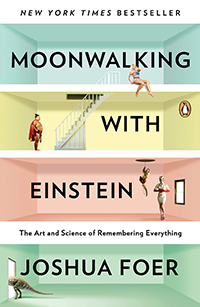
I know! A 50-line poem that you haven’t seen before, and it just goes on. In that book, he describes his quest in order to get there, participate, and ultimately, win this contest. Visualization and what you’re describing was definitely one of his biggest techniques. I read the book years ago and I still remember this one visual where he’s talking about how we remember things that we write on a checklist to go to the grocery store. Quite often, it happens that you write the darn checklist and you’re at the grocery store, but you totally forgot it. So, what if you could just actually memorize it and not even have to take it-could you do that? He gives an example of, “How can I enable you to make sure to not forget to get cottage cheese when you come home from the grocery store?”
Imagine that you are in the room right now-for all of our listeners, you can do the same, you are in a room as you’re listening or maybe in your car or anywhere you are-probably there is a door around. As you’re looking at that door, imagine that, right in front of the door, there is this giant pool of cottage cheese. It is just so big that you can almost not even open the door because it’s blocking it. It’s that giant and full of cottage cheese. In that pool, Claudia Schiffer is bathing in that cottage cheese and just ponder that image for a moment. As you go to the grocery store, be prompted by that image. Because that image has so much going for it, it has amplified the notion and there’s an exaggerated notion around it. It’s visual and it’s so animated because you just don’t have a static pool of cottage cheese, it’s Claudia Schiffer, and she’s a bathing, so she’s moving, and Claudia Schiffer dripping with dairies is an image that we find difficult to delete from our minds.
Thanks for that!
So, I guarantee that a year from now, if I were to call you and say, “Hey, what do you remember from that podcast? There’s one supermodel that was part of it. Tell me what you remember,” and I guarantee that image will still come back. This is fun for us to talk about it, but then bringing it back to business, people may say, “Oh, I can’t really include an image of Claudia Schiffer dripping with dairy in my B2B content!” The idea is not necessarily to include that same image, but the principle we draw from this is, can you create something that is vivid enough and placed in the physical context in your audience’s minds? That’s what leads to a stronger memory trace.
Right. Even if you tell them not to think about it, you trigger them thinking about it because of the strong visual like, “Don’t think of pink elephants in black tap shoes dancing on a boardwalk!”
Exactly! Or even if we were to give, let’s just say, a more business-oriented content, I was just working with a company the other day and we were talking about improved technology that helps you these days to annihilate any kind of surround sound that you have as you take a conference call from the airport or from your home and there are dogs barking. So, imagine that you’re doing this online conference and you’re in your office, you’re in your slippers-perhaps, still in your pajamas-but you have your content all prepared, and there is your cute Labrador who’s sitting right behind you, he gets so eager by something that shows up on your screen that he starts barking, this technology enables you to mask that sound. Notice how, right now, it just builds a fairly visual and vivid context in your mind, and it was a physical context, and that is so important because if you think about it, how do we retrieve our memories? We retrieve them by going back to a context so if I said to you, “Can you remember what you were wearing two days ago?” Would you be able to answer that?
Probably not, no.
There are people who say “yes” and people who say “no” to that question, but whether yes or no, I guarantee that what your brain just did just now is that it went to a physical context and it asked, first of all, “Which days was it? Two days ago?” For us, that would have been the weekend, and then it goes to, “Well, what was I doing on Saturday and on that day? Was I with friends? Did I meet them for a coffee? Did I go to play a tennis game?” It went to a physical context in your minds and from there, you are able to retrieve or not your memories, but at least, you’re going back to a physical context, and the more that you can recreate that in your audience’s minds, the stronger the memory.
Mm-hmm, yup. I remember-okay, so Saturday, I went to a meeting and heard a great talk by Vanessa van Edwards, and I forget what I was wearing, but it was a button-down shirt and some nice jeans, and then I changed my clothes later, and so forth so yeah, I’m trying to put myself spatially and temporally into place and time and then, now, what was the context around that
Exactly! So, the more that we can create that for our audiences, the stronger the memory for that event.
Mm-hmm, that makes a lot of sense! I think you have a service where you will take somebody’s PowerPoint deck-like their signature talk-and turn that into a much more memorable deck. Is that something that you do? I think it is.
Surprise is the one that consistently can predict whether something is memorable or not.
We do. Yes, because sometimes people will say, “Well, we believe in all of your principles, we read the book, and we understand all of this, but simply, we don’t have the time or we don’t have the resources to implement them so, will you do it for us?” That has been satisfying because for our business, we either teach you how to do it or we do it ourselves, and when we have the possibility to do it ourselves then we indeed have to practice what we preach. If we talked about repetition, we make sure that there is one clear message that ties all of the other messages together and if audiences on average forget about 90% of what you share with them, regardless of how outstanding the content is, by the way, after two days, most of that will have been erased, but there is that 10% that does stay and linger on for a long term, so our angle is to make sure that we stay very deliberate about the small percentage that audiences remember. That shows through any kind of Rexi Media deck that you would have seen from any presenter. It’s the same for the vivid visuals, the same for the context, the same for the storytelling, and the same for emotion or this element of surprise, by the way. We didn’t get a chance to speak about this but I just completed a research study and one of the results was that, out of all the variables, surprise is the one that consistently can predict whether something is memorable or not.
Hmm. Interesting. So, what would be surprise that you would have incorporated into this interview? I mean, the Claudia Schiffer pile of cottage cheese, I guess, would qualify. That was a surprise. I wasn’t expecting that one. Was that something that you had engineered into the conversation on purpose from the beginning that you kind of planned for that surprise or is there another surprise that you intend to spring on us before the…?
I’m reserving to the end. You’re right! How you approach a piece of content-whether it’s a podcast or a presentation or a marketing campaign-it doesn’t matter because you can plan for it or you might not plan for it. I love that I offered you one such as, Claudia Schiffer. You offered me one such as, Neil Strauss. I admired him for many, many years. In fact, I even delivered a keynote a few years back, which was called, “What Can Pickup Artists Teach Us About Communication?” At the time, he wasn’t married, he was still part of that septoranian society of, “How can I become better at the art of seduction through science?” and that’s what attracted me to him so, hearing his name in this interview was definitely a surprise, but the point that would help us all to know is thiWhat is the distinction between novelty and surprise? I don’t think too many people think of it that way and quite often, we use the two terms interchangeably but there is a distinction.
Novelty is something that we haven’t seen or experienced before. Surprise, on the other hand, is something that we have seen or experienced before, but we did not expect in that very moment. Look at surprise as something that is unexpected but yet known. Biologically speaking, surprise is always bad. Why is that? Because surprise is a prediction error. The brain has evolved to constantly be in the future and to predict what happens next and when we do, we survive longer. It has helped us tremendously if we realize that if you hear some shuffling behind our back, we should turn and be prepared to fight, and those who are prepared and can predict what those noises were, survived a lot longer. Even though surprises are prediction error, we still enjoy its results because as we are surprised, the brain secretes this opiates-I’m sure that based on your background, you’re very familiar with those.
Mm-hmm.
And they definitely help us do to fight and handle the fear and possible pain and when we realize that, “Wait a second! We were not threatened!” then, we still enjoyed the consequences of opiates, which is that little bit of a natural high, so if somebody throws you a surprise party, and you open the door, and it’s “Surprise!”, your initial reaction may be one of, “I’m prepared to fight right now,” that’s only a short fraction of a second lived, and then you’re enjoying the natural high that results from that initial reaction.
Mm-hmm, right. One of the things that popped into my mind when you’re talking about surprise versus novelty was, I haven’t seen any of these videos lately, but they were really popular viral videos where somebody was watching, I don’t know, something entertaining on the computer, or they’re really in a kind of a trance-type state, and then suddenly, there’s this scream and this picture of a scary zombie or something, but do you know what I’m talking about?
Yeah!
And it’s always entertaining! You know it’s coming but you don’t know when it’s coming on that video. They fall over in the chair or whatever. It’s a surprise that you get-and you know this is a meme now and you’re going to end up watching.
Yes!
Or, you’re the one who’s the butt of the joke. It’s just some really boring video and then, suddenly, that surprising thing, and then you’re about to get a heart attack. You’ve seen it before so it’s not novelty, but darn it, they got you again and you almost had a heart attack!
That’s classic! In the research that I did, I studied the top 50 SlideShares of last year and I wanted to see how many of these variables that I’ve been looking at could predict whether we stay on people’s minds long enough for them to click “like”, or to click “share”, or to click “download”, or embed your SlideShare or something else, or even comment because all of those imply memory. If I impact you in some way and I’ll stay in your mind long enough, you will decide in my favor. This was a research study that I completed a few months ago and there’s still one that took me completely by surprise, most of these SlideShares have on average 12, 30, 40, 50 slides that the most that I took into account, and this particular one on slide two had the F-word on it, and I didn’t’ expect it. It’s not like I haven’t seen the word before, but definitely not in a professional SlideShare displayed in pubic and publicized by a professional company.
Yup!
And it wasn’t to be taken oh-so-seriously. That was all in good fun, but that was a very good example of surprise.
Yeah, and it’s a really good pattern-interrupt. Dropping the F-bomb is something Tony Robbins does a lot as a pattern-interrupt and people get really uncomfortable because they are not used to hearing swear words. However, he’s doing it very intentionally and for a purpose.
Oh, so true! At least in the workshop that I attended, he had, you know, how he picks on people and if you have some case study to share, he will gladly accept it. There was this young, nice girl who could not have been older than 21, and she’s expressing her depressive state and how sad she is, then the entire audience is going towards that same state of sadness and almost anxiety for this girl and then, he pauses. He looks at her and he said, “Did you just pass gas right now?” and the whole audience just don’t know what to do with that because you have moved from one state to another and talked about the disruption of a pattern and not being predictable.
Yeah. It reminds me of that Stop It video of-oh, what’s the comedian’s name? You know what I’m talking about? It’s this viral video of-what is the guy’s name? He’s an older actor. It’s going to bug me if I don’t remember!
Let’s talk about the memory, yeah?
Yeah. Oh, Bob Newhart!
Okay.
You have to watch that. This is hilarious! You’re not expecting this advice from this nice-looking, older guy. In this scene, he’s, I think, like a psychologist helping a lady out of depression or some sort of bad state, and he’s just yelling at her, “Stop it!” That’s his advice and then, he does that to people all the time. It’s really funny! I probably just spoiled it for you, guys, but watch it anyway. It’s really fun! So, pattern-interrupts and surprise are great…
Oh, definitely! As you investigate your own business content right now, regardless of your role, just ask thiTo what extent am I predictable? Because when you are predictable and your audience’s brains can anticipate what happens next, that means you’re creating a cognitive gap in their mind, and almost an invitation to multitask or go seek stimulation elsewhere. However, when your communication at times-not all the time but at times-becomes unpredictable, then you’re forcing the brain to stay with you in order to resolve that prediction error because the difference between what the brain expects and what happens in reality, that gap is how the brain learns.
Yup! So, if you were to drop a few F-bombs through this interview, it would be even more effective. By the way, the top 50 SlideShare research that you did sounds really interesting.
It’s just fresh off the presses. The first time that I mentioned it is in the book but I do plan to take it and expand it a little bit further because there are many, many consequences that happened as a result of that study. In the book, I only included this finding around surprise being the strongest, but there are a few others that I want to investigate further because there are some other variables that are showing in some ways that I didn’t expect. For instance, talk about surprise, for example, social aspect is one of the 15 variables that I contend we can use to influence other people’s memory-meaning that, the more that we create content that enables others to share it, put them in a good light, and gives themselves some social currency, then when we have that social aspect to our communication, it becomes memorable simply because people want to retain it so that they look good in front of others.
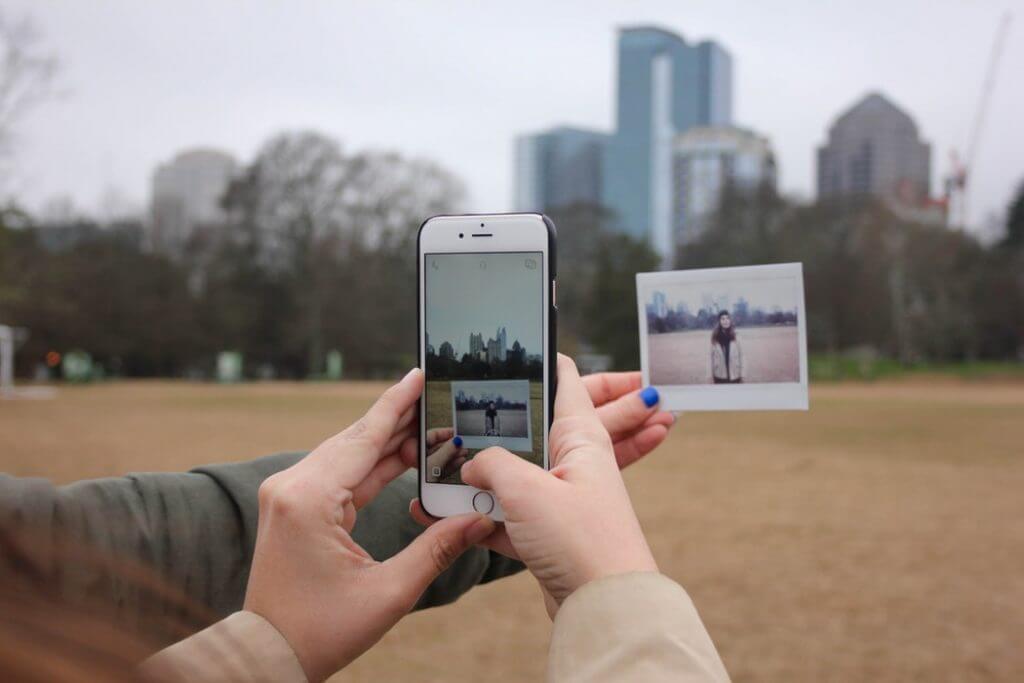
Hmm. That makes sense, yeah.
Yeah, that was one of the strongest variables that came at the surface as a result of the study and I want to dig into it a little bit more deeply and to see what forum does that social aspect take. For instance, when you shared earlier the 87% statistic? That is definitely something that I guarantee a lot of people might go back and listen to, or they may have sharpened their ears a little bit more as you’re saying that just because it has that social currency aspect to it. People want to retain it because if they were to repeat it, it would make them look good in front of others.
Right, so if you’re coming up with a blogpost, for example, and you’re trying to dream up some topic or headline like, I have just made this up right now, “13 Ways to Look like the Smartest Person in the Room,”
Mm-hmm.
There are lots of social currency there for the person who reads that article.
Yes, absolutely! Which is why, one of the guidelines, as you are sitting in front of the computer and thinking, “I’m going to create some slides, a blog, a marketing campaign,” whatever your content is, wonder, however, I’m titling this, “Would this be making others look good?” and “Am I creating this from where they’re sitting and not from where I’m sitting?”
Yup. Really understanding what they’re perspective is and their unique problems and situation. Perfect! One last thought here that I think is really great for listeners who actually do write blogposts is, a way to repurpose content into another format that has more visual interest than an article and has a different kind of ecosystem on the internet for sharing and spreading the information, is to take your blogpost, condense it down to X number of key points, put that into a SlideShare document, and share it through SlideShare.
Yes, share it through SlideShare or even if you don’t have time for that kind of effort, you can condense one idea at a time and then share it via Instagram, for instance. That can be a powerful technique, especially as we walk around with our phones and inherently, with our cameras in them all day long. The environment gives us so many opportunities to capture visuals that can bring to life an abstract idea that you have. All you have to do is open your eyes.
Yeah. Well, this has been fabulous. I’m so excited that we were able to set a time and get you on for an interview. I know you were really “head’s down” for a while there with finishing your book so., congratulations again on that! To all you, listeners, definitely pick that book up — Impossible to Ignore — so that you can learn how to be impossible to ignore and remember the key point from this presentation was all about memory being at the root of all decision-making so now, I’m going to reinforce your key point, Carmen.
Yay!
If you are going to be serious about influence and driving more sales, or being more effective in your presentations, or just anywhere like in your family or in your passion projects, or with your volunteer efforts, or what-have-you, you want to learn the stuff. Carmen, if there was one last point that you wanted to make since I kind of stole your thunder and just reinforced your key point, what would be that one last thing that you would want to share?
The one last thing that is definitely links to the main message is that, people will always make decisions in your favor based on what they remember and not based on what they forget.
Perfect, all right! Also, if somebody wanted to work with you, let’s say, they wanted to have a PowerPoint overhaul like we discussed a few minutes ago, or they wanted training on how to be more effective in their presentations or in their marketing messages, how would they find you?
They can find us at our website, which is Memzy.com. My twitter is @AreYouMemorable. My email address is cs****@***zy.com.
Awesome! Well, thank you again, Carmen! Thank you, listeners! I hope you got some great value out of this and remember, you have to apply it because it’s through the applied learning that you actually get some results. Until next time! I’m your host, Stephan Spencer, signing off.
Important Links
Connect with Carmen Simon
Tools/Apps
Books
Video

